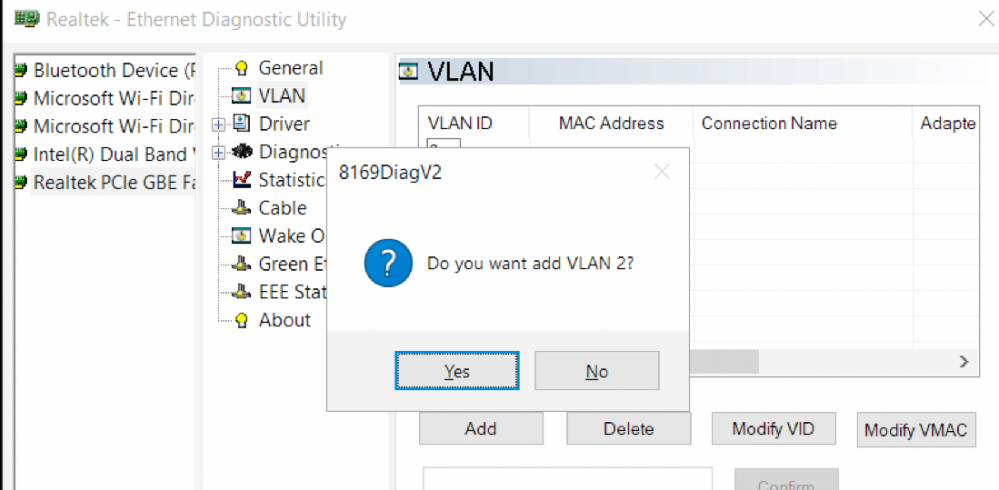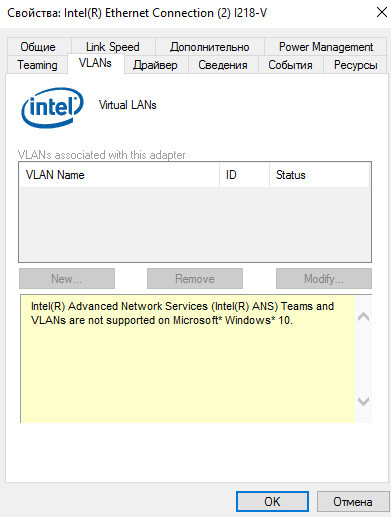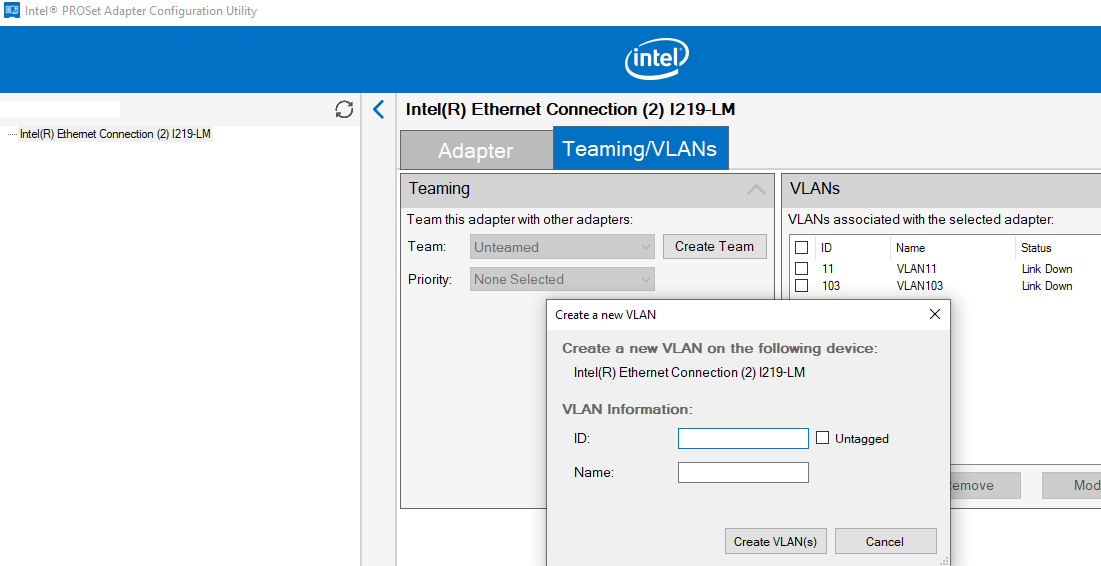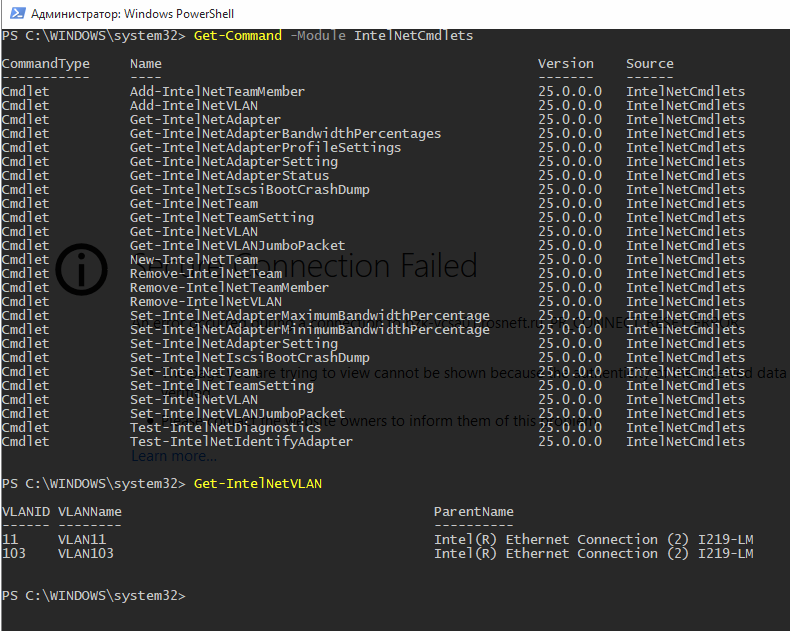- Windows network advanced configuration
- Virtual Server
- Firewall
- Filters
- Special Application
- Настройка VLAN интерфейсов в Windows 10 и Windows Server 2016
- Настройка VLAN интерфейсов в Windows 10
- Настройка VLAN в Windows 10 на сетевой карте Realtek
- Настройка VLAN на сетевом адаптере Intel Ethernet
- Несколько VLAN в Windows 10 с помощью Hyper-V
- Настройка нескольких VLAN в Windows Server 2016
- Network Configuration.cab files
Windows network advanced configuration
Read this advanced network router configuration for knowing the additional features that provided by most of routers from different vendors.
Basically your network will still work without using these features, however it’s good to take some time to understand and make some testing.… Who knows you might need it..
Virtual Server
If you have set up server in your network and would like it to be accessible from internet, then you need to set up virtual server (port forwarding) on router. Most of the routers are also able to do port-redirection, meaning incoming traffic to a particular port can be redirected to a different port on the server.
The main benefit of this virtual server feature is you only need one WAN IP address to be accessed by Internet users to several servers in your network.
Example1: You set up a web server with IP 192.168.1.15 using TCP port 80 and wants internet users to access it at all times.
Name: Web Server
Private IP: 192.168.1.15
Protocol Type: TCP
Private Port: 80
Public Port: 80
Schedule: Always
After setting this up, the internet users can access this web server by typing http://your-WAN-IP-address in their favorite web browser.
Example 2: You set up a ftp server with IP 192.168.1.16 using TCP port 21 and allow internet users to access it by using port 4500 on Friday only. You need to set port redirection in order to achieve this objective.
Name: FTP Server
Private IP: 192.168.1.16
Protocol Type: TCP
Private Port: 21
Public Port: 4500
Schedule: From: 12:00AM to 12:00AM, Thursday to Friday
After setting this up, the internet users can access this ftp server by typing ftp:// :4500 in their favorite web browser or using other ftp client application on every Friday.
Firewall
Firewall is used to deny or allow traffic from passing through the router. That means it can deny unauthorized traffic to your home network(LAN) and also deny unwanted traffic from home network(LAN) going to Internet. When virtual services are created, it will also display in firewall rules.
Here is default firewall rules on router:
The priorities of the rules are from top (highest priority) to the bottom (lowest priority). Based on default firewall rules above, it means:
1) The first rule is to deny any(*) to home network(LAN). This will be useful to deny those malicious traffic such as worm or virus coming from Internet.
2) The second rule is used to allow any traffic from home network(LAN) going to any(*). This will allow all computers in your network to access Internet.
However this is still not the best way to set firewall rules. Below is the better and restricted way to set firewall rules.
1) Allow traffic from home network(LAN) to any(*) based on network services (ports). As an example, you can only allow all computers to access Internet’s http service.
2) Deny any(*) to any(*). It means deny all other traffic.
Take some time to tune the firewall, it is very useful to secure your network.
Filters
Filters are used to deny or allow home network(LAN) computers from accessing Internet. There are four filters available on this router:
IP Filters: Used to deny LAN IP addresses from accessing the Internet on specific port or all ports. Sometimes I use this feature to deny some computers to access Internet.
MAC Filters: You can also allow or deny the computer from going to internet based on MAC address. Frankly tell you I hardly use this filter.
URL Blocking: Very common to be used to deny LAN computers from accessing specific websites. As you know there are bunch of unhealthy websites on Internet, so it’s good to key in specific keywords and the web access will be denied if those keywords found on URL.
Domain Blocking: Used to allow or deny LAN computers from accessing specific domain on the Internet. It will deny all services(http, ftp, etc) that provided by that domain if you block it.
Special Application
If you need to run applications, such as internet gaming, video conferencing, internet phone, etc that require multiple connections, you need to define this special application feature here. This is because those applications will not work correctly through NAT (Network Address Translation) in home network.
The way to set it is specify the port normally associated with an application in the “Trigger Port” field (port used to trigger the application), select the protocol type as TCP or UDP, then key in the public ports associated with the trigger port to open them for incoming traffic.
It’s not easy to use this feature unless you know all the ports involved in that application, however you can use some well known applications that pre-defined on this router.
This feature will open all in/out accesses for one of your network computer, and commonly used for Internet game application. The concern is this will fully expose that particular DMZ computer to Internet and increase security risk.
Don’t use this option unless it’s really needed, try to use special application features which I explained above if possible. If you want to use it, just key in particular computer IP to enable this DMZ feature.
Настройка VLAN интерфейсов в Windows 10 и Windows Server 2016
В этой статье мы покажем, как настроить тегированный интерфейс VLAN в Windows 10 и Windows Server 2016 (2019/2012R2). Стандарт VLAN (Virtual LAN) описан в 802.1Q и предполагает маркировку трафика с помощью тегов (vlanid), необходимую для отнесения пакета к той или иной виртуальной сети. VLAN используются для разделения и сегментирования сетей, ограничения широковещательных доменов и изоляции сегментов сети для повышения безопасности. В Windows вы можете настроить несколько различных логических сетевых интерфейсов с разными VLAN на одном физическом интерфейсе с помощью различных средств.
Для использования VLAN необходимо соответствующим образом перенастроить порт коммутатора, куда подключен ваш компьютер/сервер. Порт должен быть переведен из режима access в режим транк. По умолчанию на транк порту разрешены все VLAN, но вы можете указать список номеров разрешенных VLAN(от 1до 4094), которые доступны на данном порту коммутатора Ethernet.
Настройка VLAN интерфейсов в Windows 10
В десктопных версиях Windows нет встроенный поддержки VLAN. Только в самых последних версиях Windows 10 можно установить один тег VLAN для сетевого интерфейса. Для этого используется командлет PowerShell для управления сетевыми настройками. Например:
Set-NetAdapter –Name «Ethernet1» -VlanID 50
Однако есть два способа создать отдельный виртуальный сетевой интерфейс с определенным VLAN ID в Windows 10: с помощью специального драйвера и утилиты от производителя вашей сетевой карты и с помощью Hyper-V.
Настройка VLAN в Windows 10 на сетевой карте Realtek
Для сетевых карт Realtek вы можете настроить несколько виртуальных сетевых адаптеров с различными VLAN при помощи специальной утилиты от вендора — Realtek Ethernet Diagnostic Utility. В описании на сайте производителя убедитесь, что ваш сетевой контроллер Realtek поддерживает настройку VLAN.
Скачайте и установите последнюю версию сетевого драйвера для вашего адаптера Realtek и запустите утилиту Ethernet Diagnostic Utility.
Перейдите в раздел VLAN, нажмите кнопку Add и добавьте нужный VLAN ID. После этого в Windows появится новое сетевое подключение.
После создания сетевых интерфейсов для ваших VLAN вы можете задать на них нужный IP из соответствующей подсети.
Настройка VLAN на сетевом адаптере Intel Ethernet
У Intel для настройки VLAN есть собственная утилита Intel Advanced Network (Intel® ANS) VLAN. Ваша модель сетевого адаптера, естественно, должна поддерживать технологию VLAN (например, VLAN не поддерживаются для карт Intel PRO/100 и PRO/1000). При установке драйвера выбейте опции Intel PROSet for Windows Device Manager и Advanced Network Services.
После этого в свойствах физического сетевого адаптера Intel появляется отдельная вкладка VLANs, где можно создать несколько VLAN интерфейсов.
Однако этот способ работает во всех предыдущих версиях Windows (до Windows 10 1809). В последних версиях Windows 10 на вкладке присутствует надпись:
Для последних версий Windows 10 недавно Intel выпустила обновленный драйвера сетевых адаптеров и утилиту Intel PROSet Adapter Configuration Utility. Скачайте и установите последнюю версию драйвера Intel и эту утилиту.
Запустите ее, перейдите на вкладку Teaming/VLANs, нажмите кнопку New и укажите имя сетевого интерфейса и его VLANID.
Кроме того, вы можете добавить/удалить/просмотреть список VLAN с помощью специальных PowerShell командлетов из модуля IntelNetCmdlets:
Несколько VLAN в Windows 10 с помощью Hyper-V
Есть еще один способ создать несколько VLAN в Windows 10 с помощью Hyper-V (доступен только в Pro и Enterprise). Для этого нужно установить компоненты Hyper-V:
Enable-WindowsOptionalFeature -Online -FeatureName:Microsoft-Hyper-V -All
Создайте новый виртуальный коммутатор через Hyper-V Manager или с помощью команд PowerShell (см. пример в статье о настройке Hyper-V Server).
Затем для каждого VLAN, который нужно создать, выполнить команды:
Add-VMNetworkAdapter -ManagementOS -Name VLAN50 -StaticMacAddress “11-22-33-44-55-AA” -SwitchName vSwitch2
Set-VMNetworkAdapterVlan -ManagementOS -VMNetworkAdapterName VLAN50 -Access -VlanId 50
В результате у вас в системе появится сетевой адаптер с нужным VLAN.
Настройка нескольких VLAN в Windows Server 2016
В Windows Server 2016 можно настроить VLAN с помощью встроенных средств, устанавливать специализированные драйвера или утилиты не нужно. Попробуем настроить несколько разных VLAN на одной физической сетевой карте в Windows Server 2016 с помощью NIC Teaming.
Network Configuration.cab files
I am running Windows 7 on a Toshiba laptop and use Sprint with a USB modem to connect to the internet. I noticed a few weeks ago that when I was trying to update AVG free I was unable to perform an update. I then found that I am unable to update any program. I am receiving a message that says my internet connection is either offline or blocked. Since I am able to access the internet I am assuming that it is blocking any updates but I am able to download files. When I ran a diagnostic test on the network adapters I get a message that says windows is unable to fix the problem and requires more information and it gives me a hyperlink to a diagnostic log file called ipconfig.all which I have listed below. Also get a hyperlink to a file called route.print which I am also listing below. I hope someone can make sense of this since I am at a loss as to what this is telling me and/or what to do.
Diagnostic log file —-ipconfig.all —-
Windows IP Configuration
Host Name . . . . . . . . . . . . : PC
Primary Dns Suffix . . . . . . . :
Node Type . . . . . . . . . . . . : Hybrid
IP Routing Enabled. . . . . . . . : No
WINS Proxy Enabled. . . . . . . . : No
PPP adapter Sprint Mobile Broadband — Sierra Wireless:
Connection-specific DNS Suffix . :
Description . . . . . . . . . . . : Sprint Mobile Broadband — Sierra Wireless
Physical Address. . . . . . . . . :
DHCP Enabled. . . . . . . . . . . : No
Autoconfiguration Enabled . . . . : Yes
IPv4 Address. . . . . . . . . . . : 184.203.28.191(Preferred)
Subnet Mask . . . . . . . . . . . : 255.255.255.255
Default Gateway . . . . . . . . . : 0.0.0.0
DNS Servers . . . . . . . . . . . : 68.28.154.91
68.28.146.91
NetBIOS over Tcpip. . . . . . . . : Disabled
Ethernet adapter Local Area Connection 3:
Media State . . . . . . . . . . . : Media disconnected
Connection-specific DNS Suffix . :
Description . . . . . . . . . . . : Sierra Wireless AC595U 1xEV-DO Network Adapter
Physical Address. . . . . . . . . : 00-A0-D5-FF-FF-85
DHCP Enabled. . . . . . . . . . . : Yes
Autoconfiguration Enabled . . . . : Yes
Wireless LAN adapter Wireless Network Connection:
Media State . . . . . . . . . . . : Media disconnected
Connection-specific DNS Suffix . :
Description . . . . . . . . . . . : Atheros AR5007EG Wireless Network Adapter
Physical Address. . . . . . . . . : 00-21-63-C0-99-9B
DHCP Enabled. . . . . . . . . . . : No
Autoconfiguration Enabled . . . . : Yes
Ethernet adapter Local Area Connection:
Media State . . . . . . . . . . . : Media disconnected
Connection-specific DNS Suffix . :
Description . . . . . . . . . . . : Realtek RTL8102E Family PCI-E Fast Ethernet NIC (NDIS 6.0)
Physical Address. . . . . . . . . : 00-1E-33-88-5F-50
DHCP Enabled. . . . . . . . . . . : Yes
Autoconfiguration Enabled . . . . : Yes
Media State . . . . . . . . . . . : Media disconnected
Connection-specific DNS Suffix . :
Description . . . . . . . . . . . : Microsoft ISATAP Adapter
Physical Address. . . . . . . . . : 00-00-00-00-00-00-00-E0
DHCP Enabled. . . . . . . . . . . : No
Autoconfiguration Enabled . . . . : Yes
Media State . . . . . . . . . . . : Media disconnected
Connection-specific DNS Suffix . :
Description . . . . . . . . . . . : Microsoft ISATAP Adapter #2
Physical Address. . . . . . . . . : 00-00-00-00-00-00-00-E0
DHCP Enabled. . . . . . . . . . . : No
Autoconfiguration Enabled . . . . : Yes
Media State . . . . . . . . . . . : Media disconnected
Connection-specific DNS Suffix . :
Description . . . . . . . . . . . : Microsoft ISATAP Adapter #3
Physical Address. . . . . . . . . : 00-00-00-00-00-00-00-E0
DHCP Enabled. . . . . . . . . . . : No
Autoconfiguration Enabled . . . . : Yes
Media State . . . . . . . . . . . : Media disconnected
Connection-specific DNS Suffix . :
Description . . . . . . . . . . . : Microsoft ISATAP Adapter #4
Physical Address. . . . . . . . . : 00-00-00-00-00-00-00-E0
DHCP Enabled. . . . . . . . . . . : No
Autoconfiguration Enabled . . . . : Yes
Tunnel adapter Teredo Tunneling Pseudo-Interface:
Connection-specific DNS Suffix . :
Description . . . . . . . . . . . : Teredo Tunneling Pseudo-Interface
Physical Address. . . . . . . . . : 00-00-00-00-00-00-00-E0
DHCP Enabled. . . . . . . . . . . : No
Autoconfiguration Enabled . . . . : Yes
IPv6 Address. . . . . . . . . . . : 2001:0:4137:9e76:38ed:19d9:4734:e340(Preferred)
Link-local IPv6 Address . . . . . : fe80::38ed:19d9:4734:e340%14(Preferred)
Default Gateway . . . . . . . . . :
NetBIOS over Tcpip. . . . . . . . : Disabled
Tunnel adapter 6TO4 Adapter:
Connection-specific DNS Suffix . :
Description . . . . . . . . . . . : Microsoft 6to4 Adapter
Physical Address. . . . . . . . . : 00-00-00-00-00-00-00-E0
DHCP Enabled. . . . . . . . . . . : No
Autoconfiguration Enabled . . . . : Yes
IPv6 Address. . . . . . . . . . . : 2002:b8cb:1cbf::b8cb:1cbf(Preferred)
Default Gateway . . . . . . . . . : 2002:c058:6301::c058:6301
DNS Servers . . . . . . . . . . . : 68.28.154.91
68.28.146.91
NetBIOS over Tcpip. . . . . . . . : Disabled
and for the network configuration.cab file named route.print ——
===========================================================================
Interface List
32. Sprint Mobile Broadband — Sierra Wireless
12. 00 a0 d5 ff ff 85 . Sierra Wireless AC595U 1xEV-DO Network Adapter
11. 00 21 63 c0 99 9b . Atheros AR5007EG Wireless Network Adapter
10. 00 1e 33 88 5f 50 . Realtek RTL8102E Family PCI-E Fast Ethernet NIC (NDIS 6.0)
1. Software Loopback Interface 1
19. 00 00 00 00 00 00 00 e0 Microsoft ISATAP Adapter
20. 00 00 00 00 00 00 00 e0 Microsoft ISATAP Adapter #2
18. 00 00 00 00 00 00 00 e0 Microsoft ISATAP Adapter #3
17. 00 00 00 00 00 00 00 e0 Microsoft ISATAP Adapter #4
14. 00 00 00 00 00 00 00 e0 Teredo Tunneling Pseudo-Interface
15. 00 00 00 00 00 00 00 e0 Microsoft 6to4 Adapter
===========================================================================
IPv4 Route Table
===========================================================================
Active Routes:
Network Destination Netmask Gateway Interface Metric
0.0.0.0 0.0.0.0 On-link 184.203.28.191 51
127.0.0.0 255.0.0.0 On-link 127.0.0.1 4531
127.0.0.1 255.255.255.255 On-link 127.0.0.1 4531
127.255.255.255 255.255.255.255 On-link 127.0.0.1 4531
184.203.28.191 255.255.255.255 On-link 184.203.28.191 306
224.0.0.0 240.0.0.0 On-link 127.0.0.1 4531
224.0.0.0 240.0.0.0 On-link 184.203.28.191 51
255.255.255.255 255.255.255.255 On-link 127.0.0.1 4531
255.255.255.255 255.255.255.255 On-link 184.203.28.191 306
===========================================================================
Persistent Routes:
None
IPv6 Route Table
===========================================================================
Active Routes:
If Metric Network Destination Gateway
15 1150 ::/0 2002:c058:6301::c058:6301
1 306 ::1/128 On-link
14 58 2001::/32 On-link
14 306 2001:0:4137:9e76:38ed:19d9:4734:e340/128
On-link
15 1050 2002::/16 On-link
15 306 2002:b8cb:1cbf::b8cb:1cbf/128
On-link
14 306 fe80::/64 On-link
14 306 fe80::38ed:19d9:4734:e340/128
On-link
1 306 ff00::/8 On-link
14 306 ff00::/8 On-link
===========================================================================
Persistent Routes:
None











